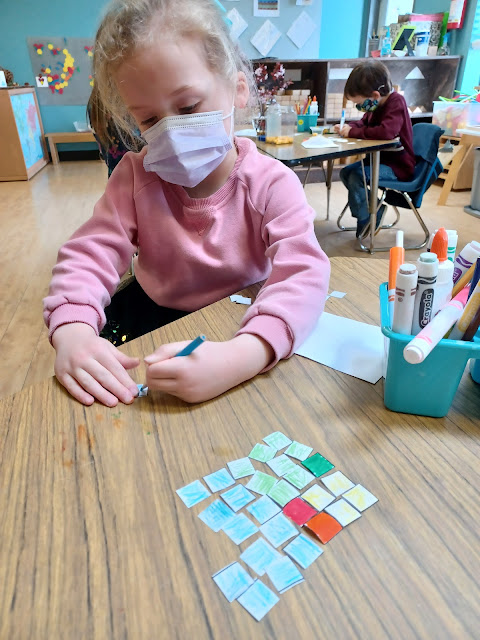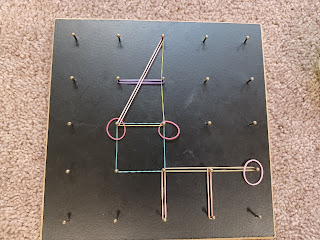The Fibonacci sequence is a sequence of numbers in which each number in the sequence is equal to the sum of the two numbers before it. Starting with 0 and 1, this sequence is a wonderful way to introduce and practice concepts such as patterning, addition, building sets or multiplying, and squaring.

Within these golden rectangles, you can see these numbers 1, 2, 3, 5, and 8 squared.
The sequence naturally occurs in plants and animals, such as fiddleheads, snails, moon snails, and cherry blossoms.
 |
During recess, the children look for spiral shapes in nature. |
0,1,1,2,5,8,13,21... ask your child what comes next?































